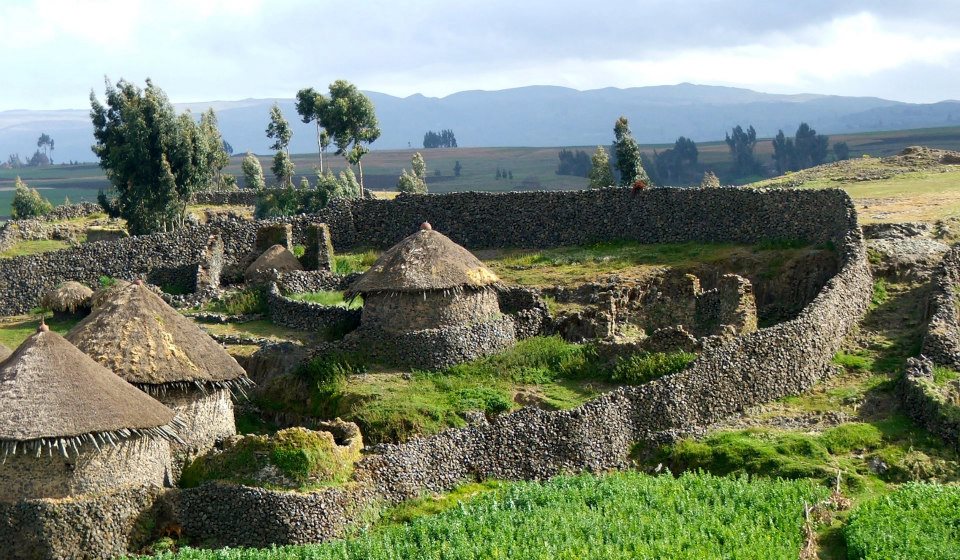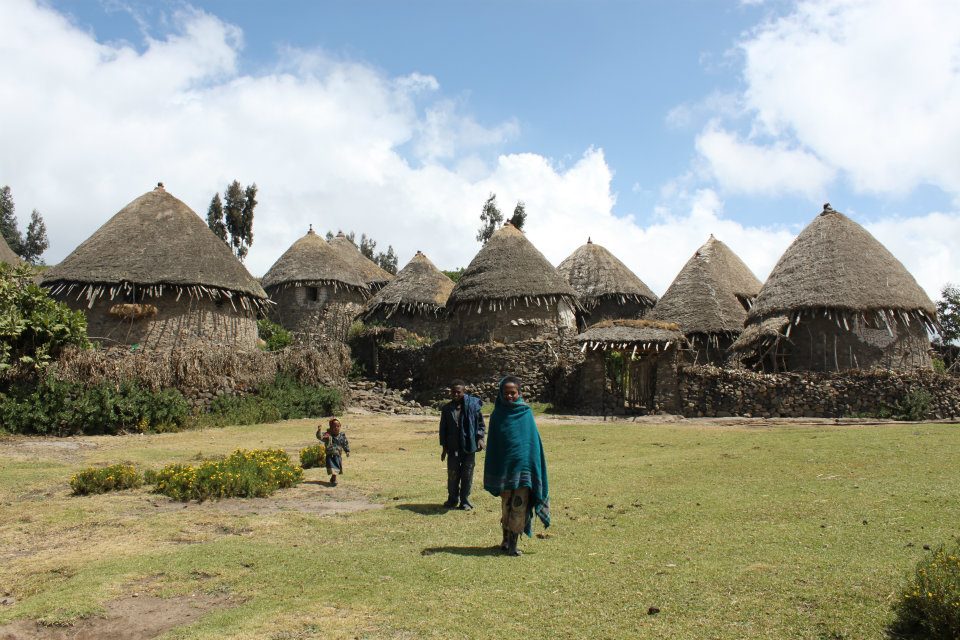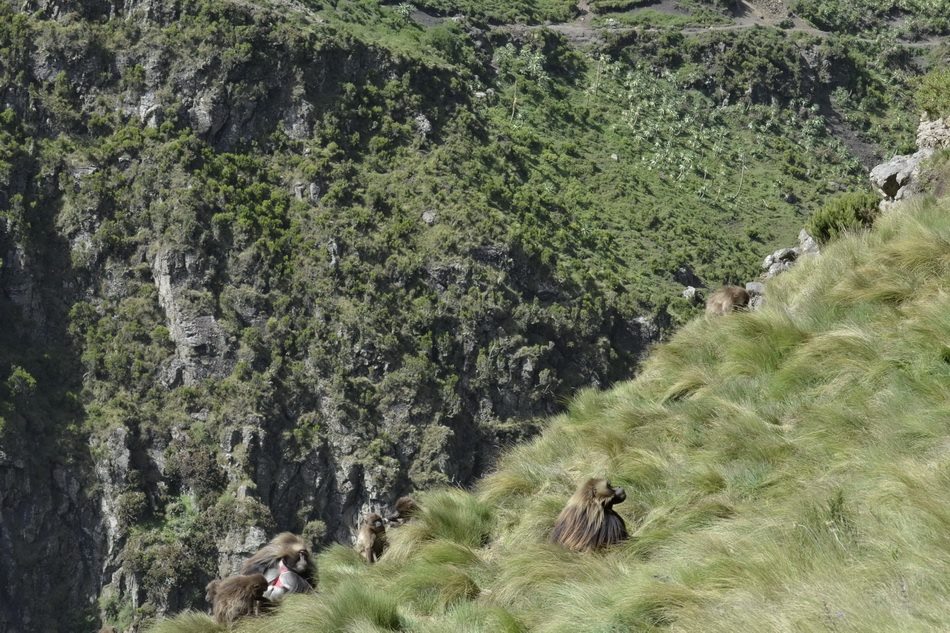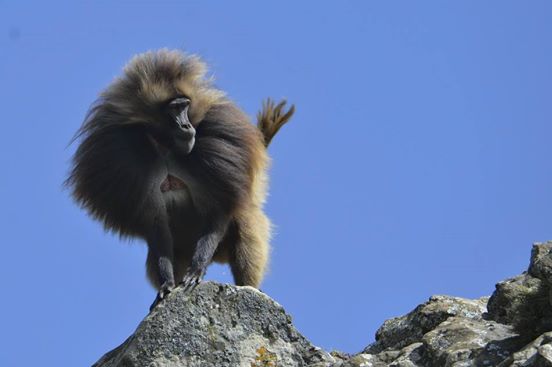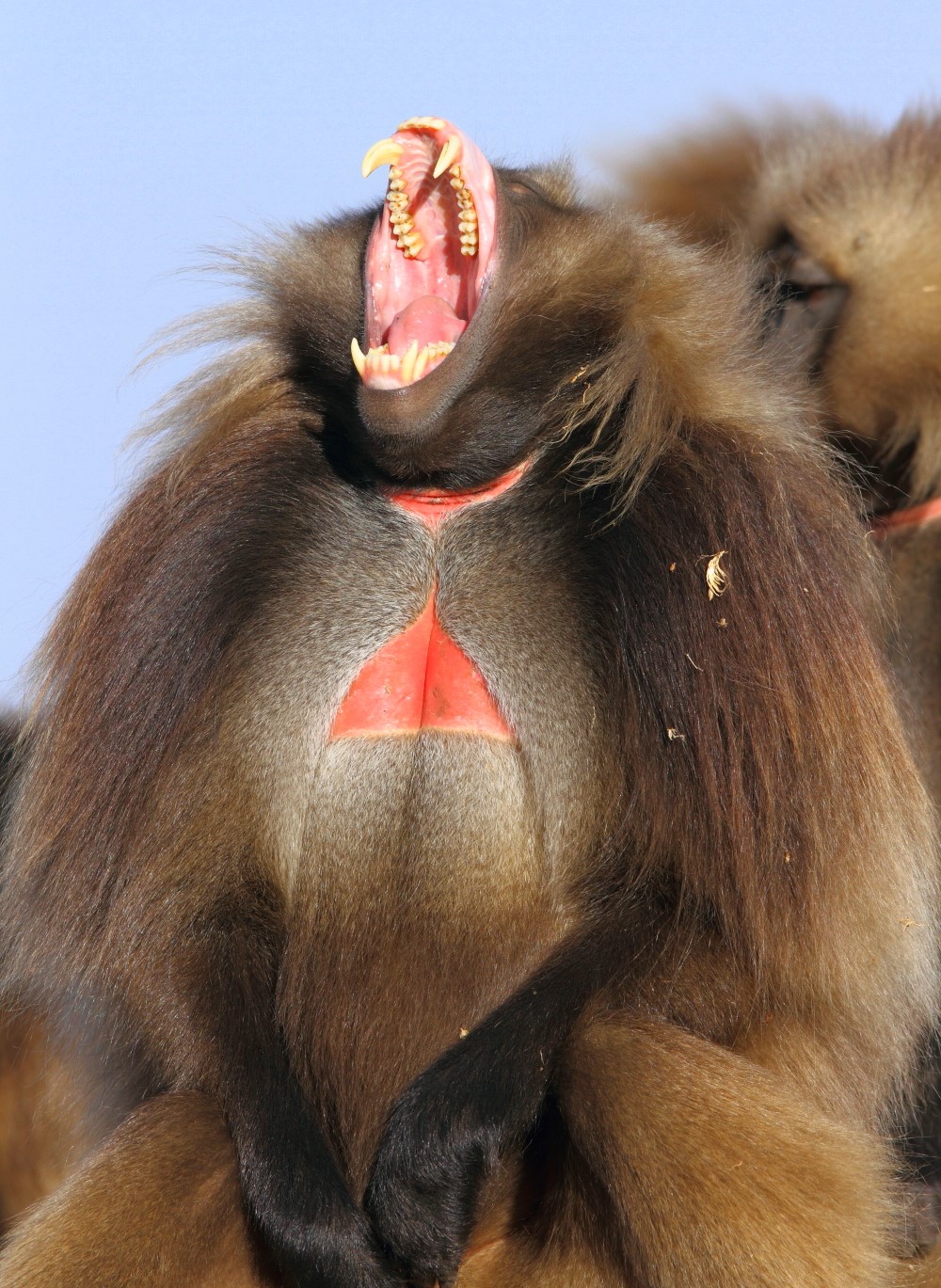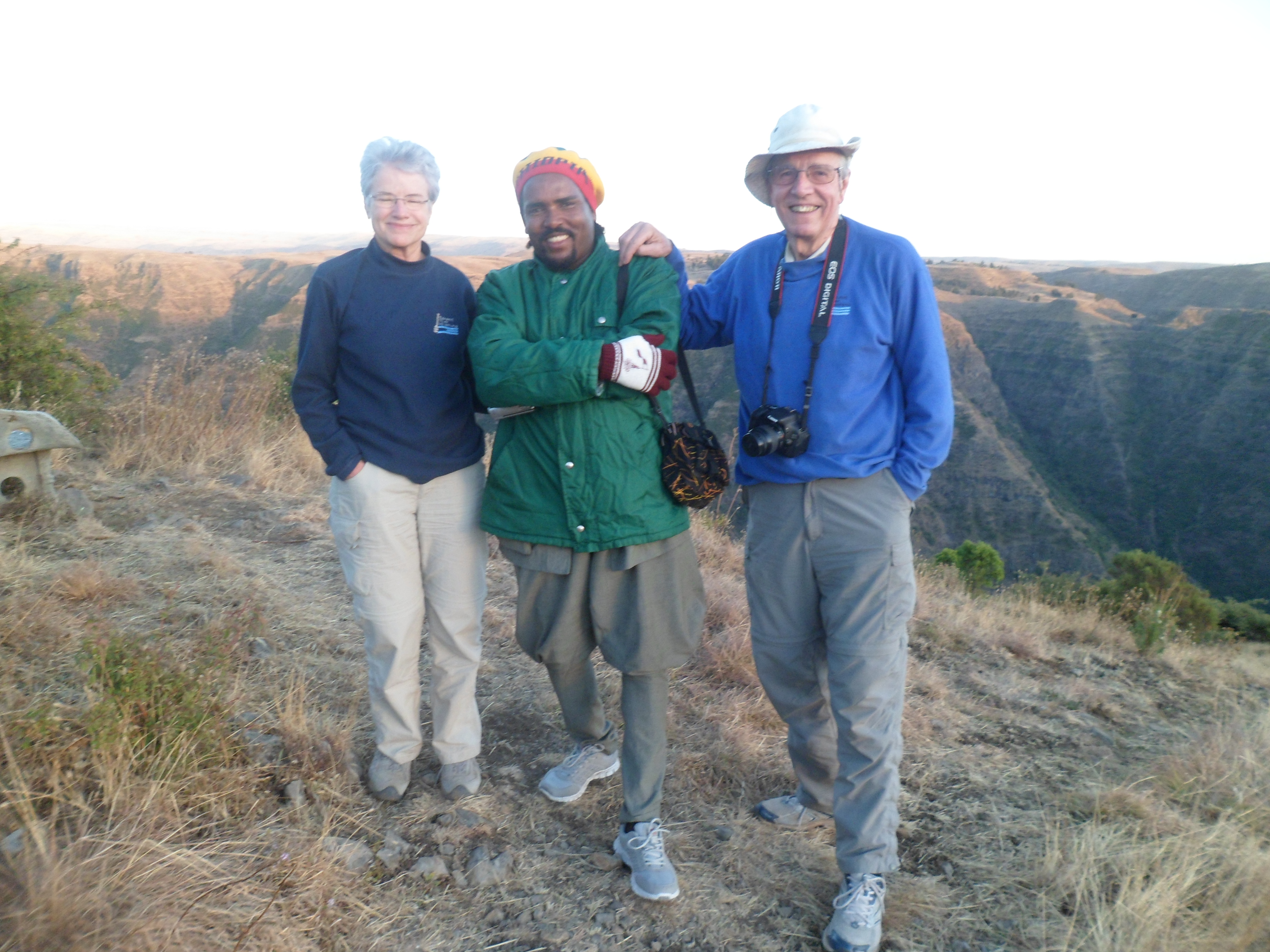Ecosystem service: Water, carbon, grazing (refuge), grass, fuel, medicinal plants
The Guassa Area is the source of 26 rivers and springs, which flow to the lower lying areas of Menz and Yifat, The lives of people and livestock as well as irrigation projects depend on these rivers. The Guassa plateau serves as the watershed catchment area for two major rivers: the Awash and the Abbye (Blue Nile).
The traditional management of the Guassa Area provides a highly prized natural resource – Festuca sp grass – to the community. The population of Menz considers the Guassa Area to be important for their livelihoods, and describe it as “Our cloth, bread and butter”. One of the main reasons for protecting the Guassa Area is for harvesting good quality Festuca grass, which is used for various purposes such as thatching, robes, farming and household implements. Another important use of the Festuca grass is its value as a marketable product that increases household income. The grass can be sold in distant markets in Debre Birhan and Addis Ababa. Festuca grass is also valuable as a marketable product for increasing household income. The grass can be sold in distant markets in Debre Birhan and Addis Ababa.
The Menz communities also depend on the Guassa Area as a source of fuel. The bushy vegetation occurring at high altitude is the only plant matter that can be used as fuel. Cherenfi (Euryops piniflius) is the most common shrub used as firewood in Menz. It is usually collected by uprooting it with using a small axe or by pulling it out of the ground by hand. Although it is not good at providing the required amount of energy and it produces lots of smoke, its abundance in the Guassa Area has made it the region’s most important firewood. Erica bush (Erica arboria) is an excellent firewood compared to Cherenfi, but little Erica is left in the Guassa area and those areas remaining are in constant use by the community. Erica is a usually collected in the rainy season as it burns quickly even when wet. Ameja (Hypericum revolutem) is another bush that can be used for fuel. Although it can grow to the height of a small tree, it never has the time to mature in the Guassa Area, so it is always found as a bushy thicket. Ameja is usually collected to make brooms or various household and construction materials, rather than firewood. All the firewood plant species collected in the Guassa area have a low calorific value and do not provide constant heat. Therefore a mixture of livestock dung (Kubet) and bushy vegetation is commonly used in Menz to generate longer lasting heat. This combination of fuels provides energy for cooking and, to a lesser extent, for heating houses in the cold months of the year.
In Menz, the Guassa Area is important grazing land, which provides a refuge for the livestock when private and cultivated fields become devoid of any grazing resource, particularly during drought. Most of the livestock that graze in the Guassa Area originates from the adjacent villages. During prolonged droughts, livestock from more distant villages also stays in the Guassa area in temporary pens to avoid long journeys from the homesteads on a daily basis.



